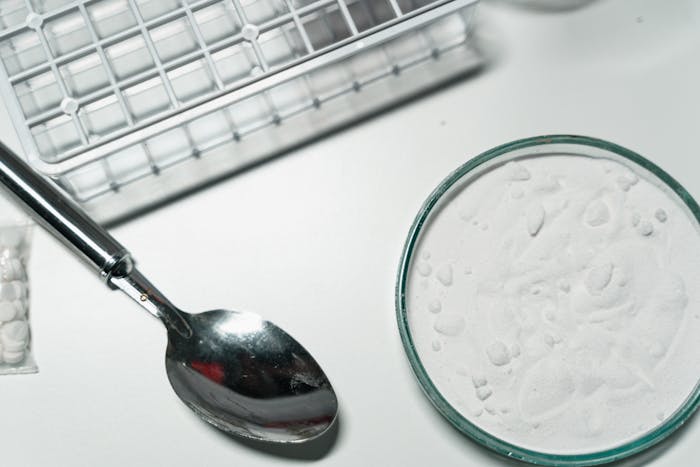Ketamine, a strong horse tranquiliser and licenced drug is becoming increasingly popular as a recreational drug.
However, ketamine has been in the news recently in a series of tragic circumstances, as the seriousness of the effects of the drug become steadily more known.
The deaths of both “Friends” actor Matthew Perry and James Lee Williams (drag star The Vivienne) who died after taking ketamine this year, have put ketamine into the spotlight associated with overdosing and has uncovered the highly dangerous side to using it.
In recent news, the drug has also been linked with the Sean “Diddy” Combs’ sex trafficking trial, having been used as a dissociating drug by his ex Cassie Ventura.
New research has additionally associated ketamine use to high levels of both physical health problems and psychological consequences, according to the University of Exeter. [1]
This blog post will explain how exactly ketamine works, the dangers of regular use and how to access treatment for a ketamine dependence or addiction.

Ketamine is used in some areas of medicine, however it is largely known for its use as an animal tranquilizer.
The drug is a sedative, but can also have a hallucinogenic effect on people. For this reason, it is used as a dissociative drug in clubs or at parties. [2]
Ketamine is known by a number of names, including Kit Kat, Special K, Ket, Vitamin K, Donkey Dust and Wonk.
It is generally taken by snorting the substance, but people also smoke it as a joint or mix it into a drink. Those who want to feel the effects faster may choose to inject it directly into their bloodstream.
Ketamine has a sleepy and dopey effect on people, and can make you feel extremely tired. You may even find yourself slurring your words or having a difficult time understanding what’s going on around you.
Since it is used as an animal tranquilizer and has anaesthetic and pain reducing qualities, it can be dangerous as you are more likely to hurt yourself without realising.
If you take too much ketamine, your body may enter into a “k-hole”, where your body no longer responds to any commands from your brain.

Ketamine use can have many negative impacts on your physical and mental health. Below are some of the risks that come with using ketamine.
If you have a large amount of ketamine or try a particularly strong batch of the drug, you could be risking an overdose.
While you may not commonly think of ketamine when it comes to overdosing, recently this has been more spoken about since the deaths of actor Matthew Perry and drag star The Vivienne died after taking ketamine. [3]
Ketamine overdose symptoms include:
The comedown from ketamine might not be as severe as other drugs such as MDMA, however you may still experience any of the following the day after using:
There are many long term physical health effects that can occur with regular use of ketamine.
After using ketamine for a prolonged period of time, you may experience:
There is a lot of research into the effects of ketamine on your bladder. Ketamine has the ability to damage the bladder through inflammation, scarring and ulcers. [4]
The effects of ketamine on the bladder can be compared to cystitis, with more frequent urination as well as abdominal cramps known as “K cramps”.
Regular use of ketamine can also cause you to experience incontinence, where you cannot control your bladder. In addition you may feel like your bladder is full all the time or that your bladder has shrunk and only produces a small amount of urine at a time.
If diagnosed as an early stage, it is generally possible to reverse ketamine bladder syndrome. However, the longer it goes undiagnosed, the less chance you have at reversing the condition.

With short term and prolonged use, ketamine can have effects on your mental health.
In the short term, coming down from using ketamine can result in anxiety, low mood and depression. With prolonged use, ketamine can lead to memory loss, flashbacks and a lack of mental clarity.
There are early clinical trials into how ketamine can be used in very small doses to treat people with depression and post-traumatic stress disorder (PTSD). Yet, the research is still in the early stages.
If you take ketamine regularly, you can become dependent on the drug. You may start to feel that you need to take ketamine so you can go about your normal activities.
This can gradually lead to an addiction to ketamine, where you cannot stop using ketamine and will need to go through a process of withdrawal to come off of the drug. A ketamine addiction can be compared to a cocaine addiction, which is also a phycological dependence.
Regular use of ketamine means you can also develop a tolerance to it. This results in you needing to take a larger amount of ketamine in order to get the same effect as you used to.

It is definitely possible to treat a ketamine addiction or dependence. There are a variety of different treatments available to you.
As with most addictions, the first step of treatment is detox. This takes place at a drug and alcohol rehab facility (inpatient rehab) where staff are able to support any withdrawal symptoms you may experience and offer you medication to ease you.
Due to ketamine not being extremely physically addictive, you should not suffer from major symptoms. However, you may still experience a low mood, anxiety or depression.
After going through a detox, you can receive therapy to help you understand the deeper causes of your ketamine addiction.
Therapy is completely tailored to you and how you will best receive this form of support. Going through therapy means you are increasingly likely to stick to your recovery in the long-term.
After having therapy, you will get a aftercare plan to ensure you stick to your recovery.
For further support and advice, contact Rehab 4 Addiction today at 0800 140 4690.
Rehab 4 Addiction have a dedicated team who can offer you advice free and confidentially. Reach out to us today to start your recovery.
[2] https://www.ncbi.nlm.nih.gov/pmc/articles/PMC7994242/